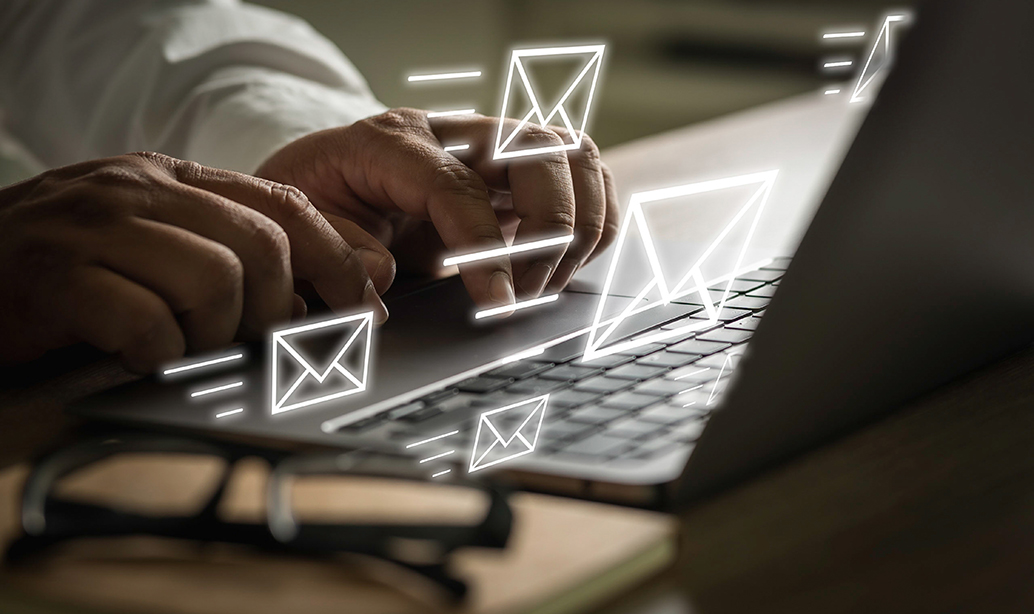How to Build a Successful Advocacy Campaign: A Guide
March 28, 2024
[PODCAST] Everyday AI
March 29, 20249 Proven Ways to Guarantee a Response From Fundraising Emails

In this article, Cait Abernethy, Director of Marketing at UpMetrics reveals 9 Proven Ways to Guarantee a Response From Fundraising Emails.
In this digital era, fundraising emails are, in many ways, the lifeblood of nonprofit organizations. According to multiple sources, approximately 28% of all online donations generated by nonprofits comes through email-based marketing and promotional campaigns. Moreover, nearly 80% of people from all age groups prefer email marketing to reading promotional content on platforms like Instagram and YouTube.
While the results of an effective email campaign can be game-changing for a nonprofit, crafting compelling emails that stand out from all of the other emails vying for the recipient’s time and interest is hardly a slam dunk. Do it right and you can anticipate a return on investment of more than $40 for every $1 spent. But “doing it right” is not as simple as it might sound.
To ensure fundraising emails drive high response rates, nonprofits should be aware of key email best practices that will significantly improve the odds of emails not only landing in the recipient’s inbox, but also being opened and read. These include the following:
Craft Irresistible Subject Lines
The subject line is the gateway to any email. Make it count! Create subject lines that are intriguing, urgent, or personalized. Consider incorporating emojis sparingly for a touch of visual appeal. Experiment with different styles and lengths to discover what resonates best with your audience.
Segment Your Audience Strategically
Not all supporters are the same, and tailoring the message to different segments of the target audience can significantly improve open rates. Segment the email list based on factors like donation history, engagement level, or geographic location. Customize the messaging so that it addresses the specific interests and concerns of each group.
Tell a Captivating Story
Engage the target audience with a compelling narrative that speaks to the heart of the nonprofit’s mission. Share stories of impact, success, and personal journeys. By connecting emotionally with readers, nonprofits can create a bond that goes beyond the immediate ask, increasing the odds for future emails to be opened and read.
Create Clear Calls-to-Action
Be direct about what you want supporters to do. Whether it is making a donation, signing a petition, or sharing the email with peers, a clear and concise call-to-action guides readers toward the desired outcome. Use persuasive language and design elements that make a call-to-action stand out.
Optimize for Mobile Responsiveness
Many people check their emails on mobile devices, so making emails mobile-friendly is essential. Test emails across various devices and email platforms to guarantee a seamless experience. A responsive design helps to ensure the content looks appealing, regardless of the screen size.
Personalize Emails
Addressing supporters by their names is just the beginning. Leverage the power of personalization by incorporating past donation history or specific engagement details. Tailor content to make each recipient feel like a valued member of the nonprofit’s community.Experiment with Send Times – Timing can also significantly impact open rates. Experiment with different send times to identify when the audience is most active and responsive. Consider time zones and cultural factors. Nonprofits can also use analytics tools to analyze the performance of emails at various times.
Utilize A/B Testing
A/B testing involves sending variations of an email to different segments of the target audience to identify what resonates best. Test different elements such as subject lines, content, images, or calls-to-action. Use the insights gained to refine future email campaigns and continually improve the overall email strategy.
Create Urgency and Scarcity
Incorporate elements of urgency and scarcity to encourage immediate action. Limited time offers, fundraising deadlines, or exclusive opportunities help to create a sense of fear of missing out, prompting supporters to open an email and take action before it’s too late.
Build Trust through Transparency
Transparency builds trust. Clearly communicate how donations will be used, provide updates on past successes, and showcase the nonprofit’s impact. When supporters trust the organization and recognize that it is creating actual impact in the community it is targeting, they are far more likely to open emails and actively participate in campaigns.
While impact is clearly one of the most important components of a nonprofit’s work, many nonprofits lack a system for measuring the impact their programs and services are making. Given that, it shouldn’t come as a surprise that many of the fundraising emails sent by nonprofits fail to clearly state the organization’s impact goals or the framework they are using to measure their progress toward delivering on those goals. And sadly, failure to include these elements, which provide the transparency and clarity around the work the nonprofit is doing, often leads to a failure to respond on the part of the recipient.
Including an impact framework provides email recipients with a clear understanding of the nonprofit’s mission and vision for change, the specific steps the organization intends to take to bring about that change, and how they intend to monitor, measure, and evaluate the progress they are making toward achieving their impact goals. Sharing impact goals alongside a framework helps to build a sense of transparency, accountability, and trust among prospective donors, allowing recipients to readily see how their contribution will be used to make a difference and increasing the likelihood they will respond positively to the solicitation.
Pairing the inclusion of impact goals and framework with email best practices can make the difference between an effective campaign that meets or exceeds fundraising goals and one that lands with a resounding thud. With these critical elements in place, nonprofits can ensure that they are reaching the right audience at the right time with the right messaging, all of which will lead to a successful fundraising effort.
9 Proven Ways to Guarantee a Response From Fundraising Emails was first posted at NANOE
For more articles like 9 Proven Ways to Guarantee a Response From Fundraising Emails VISIT HERE
Cait Abernethy
Director of Marketing
UpMetrics
The post 9 Proven Ways to Guarantee a Response From Fundraising Emails appeared first on NANOE | Charity’s Official Website.
